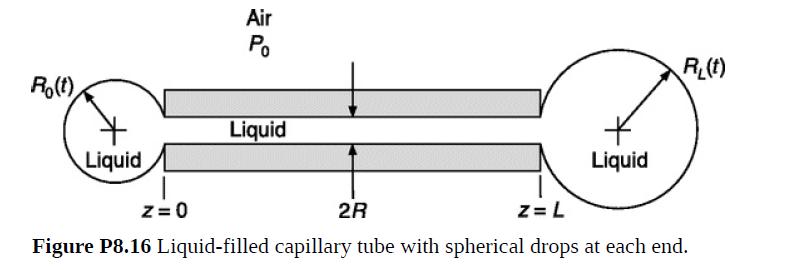Walker and Beebe (2002) demonstrated a way to pump liquid through small tubes without the need for
Question:
Walker and Beebe (2002) demonstrated a way to pump liquid through small tubes without the need for moving parts, and their idea has been applied to pointof- care diagnostics and other microfluidic devices. The concept is illustrated in Fig. P8.16. Liquid drops of radius R0 and RL are in contact with the ends of a horizontal capillary tube of radius R and length L. The flow is created by the unequal drop radii.
(a) If RL > R0, as shown, in which direction will the liquid flow?
(b) Assuming that the flow in the tube is fully developed and pseudosteady, determine the instantaneous flow rate Q(t).
(c) If R0 ≫ R and RL ≫ R, such that both drops are nearly complete spheres, derive the differential equations that govern R0(t) and RL(t). (You are not asked to solve them.)
(d) Sketch the final appearance of the two drops. Would the equations in part (c) be sufficient to determine the time tp at which the flow will stop?
Step by Step Answer:

Introduction To Chemical Engineering Fluid Mechanics
ISBN: 9781107123779
1st Edition
Authors: William M. Deen




